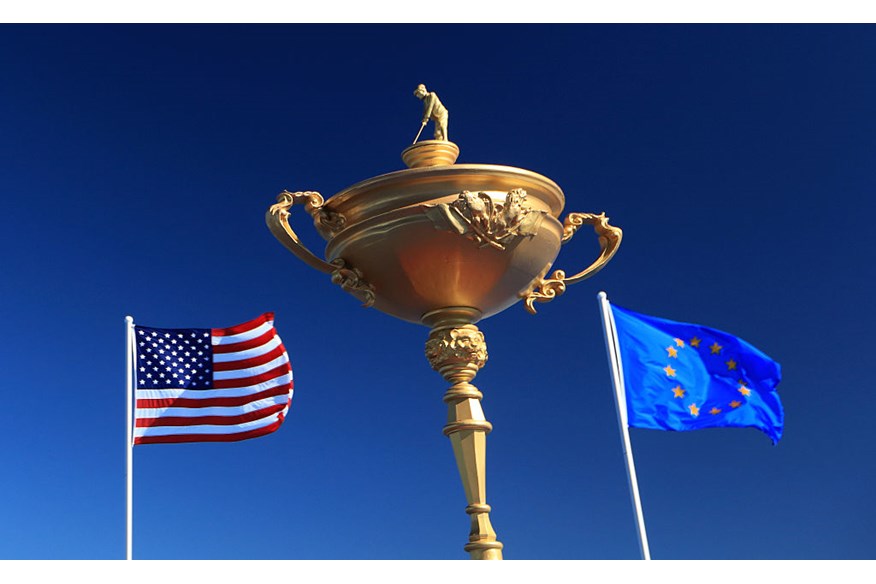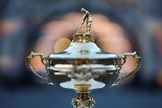Everything you need to know about the Ryder Cup trophy
Published:

Like many prizes in sport, the Ryder Cup trophy has an interesting past. Let’s dive in…
Did you know golf’s biggest tournament originated at Wentworth in 1926? There are a number of reasons why that match is not part of the tournament’s near 100-year history – and you can read that fascinating tale here – but what about the Ryder Cup trophy?
Here’s a brief history of the little gold cup that causes so much emotion every 24 months…
A brief history of the Ryder Cup trophy
The original trophy was commissioned by English seed merchant Samuel Ryder and manufactured in Sheffield by Mappin & Webb Co, who made it in 1926 for £250 – roughly £13,000 in today’s money.
The cost was split between Ryder (£100), Golf Illustrated magazine (£100), and the Royal & Ancient Golf Club of St Andrews (£50).
While a match of sorts took place in 1926, the history books show that the first Ryder Cup was officially played a year later when a United States team led by Walter Hagen took on Ted Ray’s Britons at Worcester Country Club in Massachusetts. This was also the first time the now famous trophy was seen in public.
The nine-carat chalice stands at 17 inches tall without the base and weighs four pounds, roughly the same as a large bottle of ketchup. The cup sits atop a wooden base, with scores of each Ryder Cup played engraved around gold bands.
Despite the competition being named after him, the gilded figure depicted atop the detachable lid is not Mr Ryder. It is modeled to resemble golfing great Abe Mitchell, who became a friend and golf instructor of Ryder’s. Though he missed the inaugural match due to illness, Mitchell competed for Great Britain in 1929, 1931, and 1933.
When the United States won the inaugural match, no provision had been made to house the trophy. Instead, it was agreed to share it equally among the eight players. The Americans drew lots to determine the order, and it went first to Leo Diegel. This remains the only time the Ryder Cup has been in private hands between matches.
There are believed to be five full-size replicas made for display purposes, though ownership of the original now rests with the Professional Golfers’ Association of Great Britain and Ireland. It is kept under lock and key at the PGA’s headquarters in the grounds of The Belfry.
The PGA of America owns an exact replica, which is used for the official trophy ceremony every two years, while another version is reserved for promotional purposes. Players and captains of the winning team receive a scaled-down replica of the trophy to keep.
One, which was awarded to Sam Snead after captaining the US team to victory in 1959, was sold at auction in 2013 for $179,250.

Do the player win anything else at the Ryder Cup?
Well, isn’t this a hot topic?
You can read more about the Ryder Cup pay controversy here, but the short version is the US players are each given $500,000 – $300,000 of which is for a charity of their choice, and $200,000 of which is a stipend. Most players, it should be noted, also donate this to worthy causes.
The members of the European team, meanwhile, will each receive a personalized gift from that year’s captain. For them, playing in the Ryder Cup is about pride and prestige.
